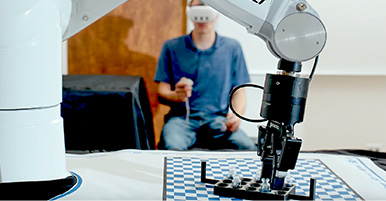Citation
Li, J. Z., Hydrick, J. M., Park, J. S., Li, J., Bai, J., Cheng, Z. Y., … & Shellenbarger, Z. (2009). Monolithic integration of GaAs/InGaAs lasers on virtual Ge substrates via aspect-ratio trapping. Journal of the Electrochemical Society, 156(7), H574.
Abstract
GaAs/InGaAs quantum-well lasers have been demonstrated by metallorganic chemical vapor deposition on virtual Ge substrates on Si via aspect-ratio trapping (ART) and epitaxial lateral overgrowth (ELO). Laser-structure growth is achieved in two steps: The first step is growing uncoalesced defect-free Ge stripes on a  trench-patterned silicon substrate via ART, whereby the misfit defects originating from the Ge/Si interface are trapped by laterally confining sidewalls. Defects arising from above the
trench-patterned silicon substrate via ART, whereby the misfit defects originating from the Ge/Si interface are trapped by laterally confining sidewalls. Defects arising from above the  film are reduced by using an optimized ELO process followed by chemical mechanical polishing to provide a planar Ge surface. The second step is overgrowing a GaAs/InGaAs laser structure on the virtual Ge substrate. A number of GaAs/Ge integration issues, including Ge autodoping and antiphase domain defects in GaAs, have been overcome. Despite unoptimized laser structures with high series resistance and large threshold current densities, pulsed room-temperature lasing at a wavelength of 980 nm has been demonstrated using a combination of ART and ELO. This technique is very promising for the achievement of reliable GaAs-based optoelectronic devices on Si.
film are reduced by using an optimized ELO process followed by chemical mechanical polishing to provide a planar Ge surface. The second step is overgrowing a GaAs/InGaAs laser structure on the virtual Ge substrate. A number of GaAs/Ge integration issues, including Ge autodoping and antiphase domain defects in GaAs, have been overcome. Despite unoptimized laser structures with high series resistance and large threshold current densities, pulsed room-temperature lasing at a wavelength of 980 nm has been demonstrated using a combination of ART and ELO. This technique is very promising for the achievement of reliable GaAs-based optoelectronic devices on Si.


